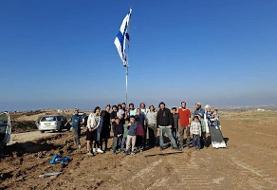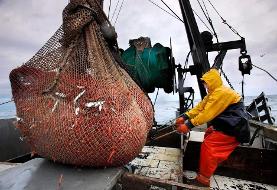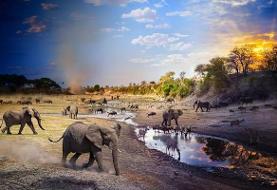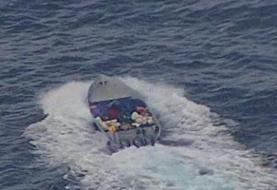NASA: The Persian Gulf Region May Become Too Hot for Living
Iran and Saudi Arabia seem to be facing a common enemy: The climate change. According to an article by Alan Buis of NASA's Jet Propulsion Laboratory, climate models predict that wet-bulb temperatures in certain world regions are likely to soon exceed 95 degrees Fahrenheit (35 degrees Celsius), which is the upper limit for humans to live. The most vulnerable areas include South Asia, the Persian Gulf, and the Red Sea by around 2050; and Eastern China, parts of Southeast Asia, and Brazil by 2070. The United States isn’t immune either. Within 50 years, Midwestern states like Arkansas, Missouri, and Iowa will likely hit the critical wet-bulb temperature limit.
Weather forecasters use "wet-bulb temperature" to assess the potential for heat stress. It reflects how uncomfortable we feel when it’s hot and humid. "Wet-bulb temperature" is the lowest temperature to which an object can cool down when moisture evaporates from it. The lower the wet-bulb temperature, the easier it is for us to cool down. It measures how well our bodies cool down by sweating when it’s hot and humid, and tells us if conditions may be harmful to our health, or even deadly.
Wet-bulb temperatures are on the rise around the world, and Earth’s climate has begun to exceed this limit. Once the wet-bulb temperature exceeds 35 degrees Celsius (95 degrees Fahrenheit), no amount of sweating or other adaptive behavior is enough to lower your body to a safe operating temperature.
Since 2005, wet-bulb temperature values above 95 degrees Fahrenheit have occurred for short periods of time on nine separate occasions in a few subtropical places like Pakistan and the Persian Gulf. They also appear to be becoming more frequent.
A prototype Wet-Bulb Globe Temperature product is being developed by the National Oceanic and Atmospheric Administration for improved heat-stress forecasts in the United States. However, wet-bulb temperature remains the standard for measuring oppressive heat and humidity, particularly for long-term global climate research.
Related to Nature:
- Iranian Food Can Save Humans and The Planet, But Beware of Salt, Rice, Fat and Sugar
- Global Warming or Selfish Humans? 200 People in 177 Cars!
- Book Review: A Chat with Authors Heather Heying and Bret Weinstein
- The Nomadic Journey of a Bakhtiari Family According to the Smithsonian Magazine
- Born to Run: The Sandals and the Book that Will Change the Way You Walk and Run
- Iranian Food Is Great for Humans and The Planet, But Beware of Salt, Rice, Fat and Sugar
- Photoshoot With A Real Russian Bear for $417
- In Pictures: The Little Girl in Red Enjoying the Pink Lake Near Shiraz
- Videos: Funny and Serious Coronavirus Advice, From Stock Market to Meat and Cruise Ships
- This 1972 Study Predicted The Planet Would Revolt Against Humans in 2020
- Thousands of Migratory Birds Mysteriously Fall From The Sky in Northern Iran
- Global Warming and The Selfish Humans: 200 People in 177 Cars!
- Seals, Dolphin Dead in Milad Tower! Tehran EPA Exposes Neglect and Animal Abuse
- Did Political Paranoia Land Iranian Cheetah Conservationists on Death Row?
- Thirsty and Beheaded! In Pictures: Drought-Stricken Shadegan Date Palm Groves


















































